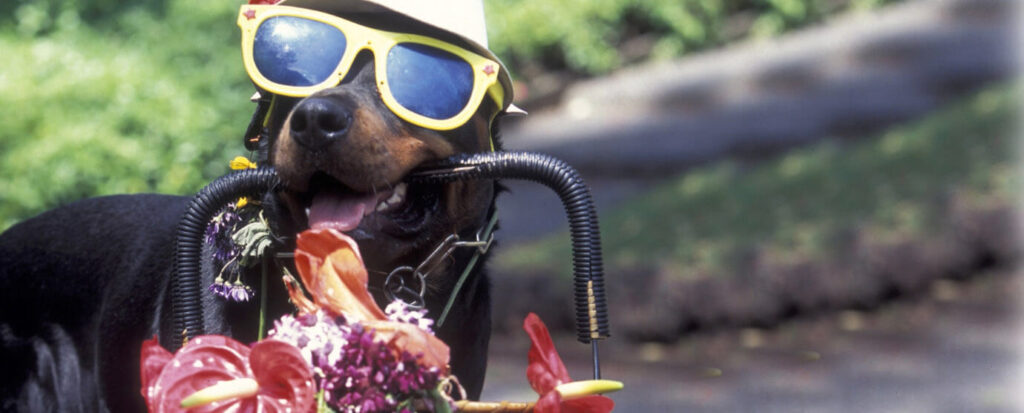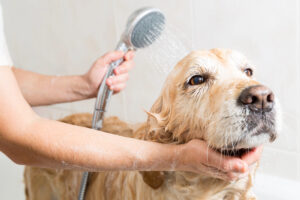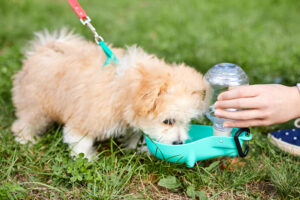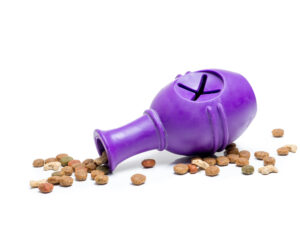
Top Spring Safety Tips for Dog Owners
Keep Your Furry Friend Safe From Seasonal Hazards
Spring is a beautiful season that brings warmer weather, blooming flowers, and longer days. However, with the change of season also comes a range of hazards for our furry friends. As a dog owner, it’s important to take precautions to ensure your pup stays safe and healthy during the spring months. We’ll cover the top spring safety tips for dog owners, so you can enjoy the season with peace of mind.
The spring hazards for dogs can include everything from pests like fleas and ticks to allergens and poisonous plants. By taking preventative measures, you can protect your dog from harm and avoid costly medical bills.
So, why is it so important to take precautions for your dog’s safety during spring? Not only will it keep your furry friend healthy and happy, but it will also prevent unnecessary trips to the vet and give you peace of mind. Plus, taking steps to ensure your dog’s safety can deepen the bond you share and make your relationship even stronger.

Boarding Clients!*Discount does not apply during holiday/peak rate periods.

Protect Against Fleas, Ticks, and Heartworm
As the weather warms up, fleas, ticks, and heartworm become a greater risk for dogs. These pests can cause serious health issues for your dog, including skin irritations, anemia, and even death. Here’s what you need to know to protect your dog from these pests:
Explanation Of The Risks Posed By These Pests
Fleas are small, wingless insects that feed on your dog’s blood. They can cause skin irritations, hair loss, and even anemia in severe cases. Ticks are parasites that attach themselves to your dog’s skin and can transmit diseases such as Lyme disease and Rocky Mountain spotted fever. Heartworm is a parasitic worm that lives in the heart and lungs of dogs, and can cause heart failure if left untreated.
Methods For Preventing And Treating Infestations
To protect your dog from fleas and ticks, use flea and tick preventatives recommended by your veterinarian. These can include spot-on treatments, collars, or oral medications. Additionally, keep your yard and home clean to minimize the risk of infestations.
Heartworm can be prevented with a monthly medication prescribed by your veterinarian. It’s important to keep up with this medication, as heartworm is difficult and expensive to treat once your dog is infected.
If you notice any signs of fleas, ticks, or heartworm, such as scratching, lethargy, or loss of appetite, seek veterinary care immediately.
Importance Of Visiting A Veterinarian For Guidance And Medication
Visiting a veterinarian is crucial for protecting your dog from flea, tick, and heartworm infestations. Your vet can recommend the best preventatives for your dog’s individual needs, as well as provide guidance on how to properly administer the medication.
In addition to preventatives, your vet can also check for any signs of infestations or infections and provide treatment if necessary. Regular check-ups with your veterinarian are an essential part of maintaining your dog’s health and well-being.
By taking steps to protect your dog from fleas, ticks, and heartworm, you can ensure that your pup stays healthy and happy throughout the spring season. Don’t hesitate to consult with your veterinarian for guidance and medication to keep your dog safe from these pesky pests.

Practice Water Safety
As temperatures rise, many dogs love nothing more than taking a dip in a nearby body of water. However, it’s important to practice water safety to protect your puppy from potential hazards. Here’s what you need to know to keep your dog safe around water.
Risks Of Water-Related Injuries
Water-related injuries can range from minor cuts and scrapes to more serious conditions like drowning or water intoxication. Dogs can also be at risk for ingestion of harmful bacteria or algae in lakes and rivers, which can lead to sickness or even death.
Precautions To Take Around Pools, Lakes, And Rivers
Around pools, make sure your dog is supervised at all times and has access to an exit point. Consider installing a fence or barrier to prevent your dog from accidentally falling in.
When near lakes or rivers, be aware of your dog’s swimming abilities and monitor them closely. Avoid areas with strong currents, and keep your dog away from areas with algae or stagnant water.
Tips For Introducing Your Dog To Water Safely
If your dog is new to swimming, start by introducing them to shallow water and gradually increasing the depth. Use a life jacket to provide additional buoyancy and support. When swimming in open water, make sure your dog is wearing a visible flotation device.
It’s also important to rinse your dog off after swimming to remove any harmful bacteria or chemicals. This is especially important if your dog has any cuts or scrapes. By taking these precautions and introducing your dog to water safely, you can enjoy a fun and safe day at the beach, lake, or pool.

Beware Of Allergies
Just like humans, dogs can experience seasonal allergies that can make them feel miserable. Here’s what you need to know to protect your best fluffy friend from allergy-related issues this spring.
Common Spring Allergies In Dogs
Common spring allergies in dogs include pollen, mold, and dust. Dogs can also be allergic to certain foods or ingredients in their diet. These allergens can cause a range of symptoms, including itching, sneezing, coughing, and gastrointestinal issues.
Symptoms To Look Out For And Methods For Treatment
If you suspect your dog has allergies, look out for symptoms such as excessive scratching or licking, red or inflamed skin, and ear infections. Your veterinarian can diagnose allergies through skin or blood tests and recommend the best course of treatment. Treatment for allergies can include medication, allergy shots, or dietary changes. Your vet may also recommend bathing your dog with a hypoallergenic shampoo to relieve symptoms.
Ways To Prevent Allergy-Related Issues, Such As Avoiding Certain Foods Or Allergens
Preventing allergy-related issues can involve avoiding certain foods or allergens. Your vet can recommend a diet that’s free from common allergens and provide guidance on reading food labels. You can also limit your dog’s exposure to outdoor allergens by keeping them indoors during peak pollen times and wiping their paws and coat after being outside. Regular grooming, such as brushing your dog’s coat and cleaning their ears, can also help prevent allergy-related issues.

Watch Out For Poisonous Plants
As you and your furry friend enjoy the great outdoors this spring, it’s important to be aware of potentially toxic plants that can harm your dog. Here’s what you need to know to protect your pup:
Explanation Of Common Toxic Plants To Dogs
Common toxic plants to dogs include lilies, daffodils, azaleas, and tulips. These plants can cause a range of symptoms, from vomiting and diarrhea to more serious conditions like liver failure or death.
Symptoms Of Poisoning And Methods For Treatment
If you suspect your dog has ingested a toxic plant, look out for symptoms such as vomiting, diarrhea, excessive drooling, or lethargy. Seek veterinary care immediately if you notice any of these symptoms.
How To Prevent Accidental Ingestion Of Poisonous Plants
To prevent accidental ingestion of poisonous plants, keep your dog away from areas where these plants grow, and keep an eye on them during walks or outdoor activities. Consider planting dog-friendly plants in your yard, such as marigolds or sunflowers, instead of toxic plants.

Be Mindful Of Temperature Changes
As the weather changes, it’s important to be aware of the effects of temperature on your furry friend. Here’s what you need to know to keep your dog safe and comfortable:
The Effects Of Temperature Changes On Dogs
Extreme temperatures can have serious health consequences for dogs. In hot weather, dogs can suffer from heatstroke, dehydration, and burns from hot surfaces. In cold weather, dogs can experience hypothermia, frostbite, and dry, itchy skin.
Precautions To Take During Hot And Cold Weather
During hot weather, keep your dog indoors or in a shaded area during peak sun times. Provide access to fresh water at all times and avoid strenuous activity during the hottest parts of the day. Consider providing a cooling mat or pool for your dog to stay cool.
In cold weather, limit outdoor time and provide a warm, dry shelter for your dog. Use dog-specific winter gear to keep them warm, and avoid walks during extremely cold weather.
Ways To Provide Adequate Shelter And Hydration For Your Dog
Regardless of the weather, it’s important to provide your dog with adequate shelter and hydration. Make sure your dog has access to fresh water at all times and a comfortable, dry place to rest. Consider using a fan or air conditioning during hot weather and providing warm blankets or bedding during cold weather.

Final Thoughts
There are several important steps you can take to keep your furry friend safe and healthy during the spring months. By protecting against fleas, ticks, and heartworm, practicing water safety, being aware of allergies and toxic plants, and being mindful of temperature changes, you can enjoy the season with your best friend.
Remember, taking precautions for your dog’s safety is important not just for their physical health, but also for your emotional well-being. By following these tips, you can deepen the bond you share with your favorite pet and make lasting memories together.
We hope this post has been helpful for you and your dog this spring season. This is not veterinary medical advice, please don’t hesitate to consult with your veterinarian for further guidance, and remember to always prioritize your furry friend’s safety and well-being.


















